Galleries
Del Vaz Projects Offers a Reinvention of the Gallery Experience on Los Angeles’s West Side
This nonprofit curatorial platform assumes many guises.
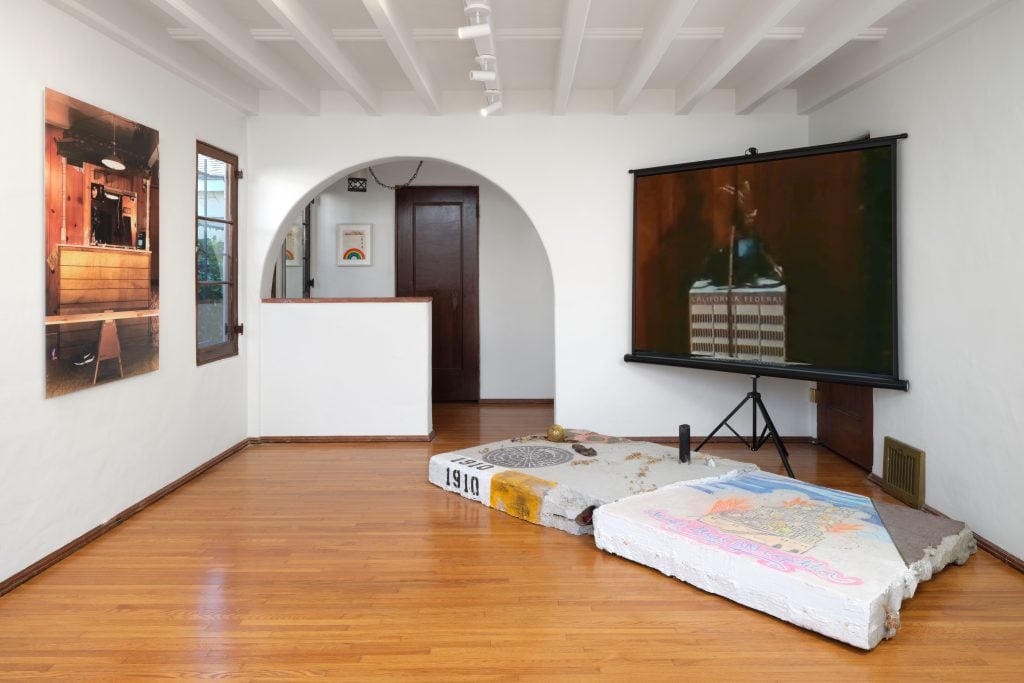
This nonprofit curatorial platform assumes many guises.

Eileen Townsend

The curator and gallerist Jay Ezra Nayssan grew up on the Westside of Los Angeles, in an Iranian-American family that prized the tradition of paziraei, or welcoming people into one’s home. The name of his curatorial project and home gallery, Del Vaz Projects, reflects that history: it derives from a mis-hearing of a Farsi phrase meaning “Those who are generous have their hand and their heart open.” The phrase, actually dast-o-del-baz, was corrected by his mother, but Nayssan decided to keep “vaz” rather than “baz” because it spoke to the ethos behind Del Vaz: a nod towards how tradition can be shifted by geography and generation, how the skewing of cultural inheritance often generates fresh meaning. Central to Nayssan’s inquiry are questions about home and domestic space: Where and how do we live? Who joins us? What happens when we lose or remake our sense of place?
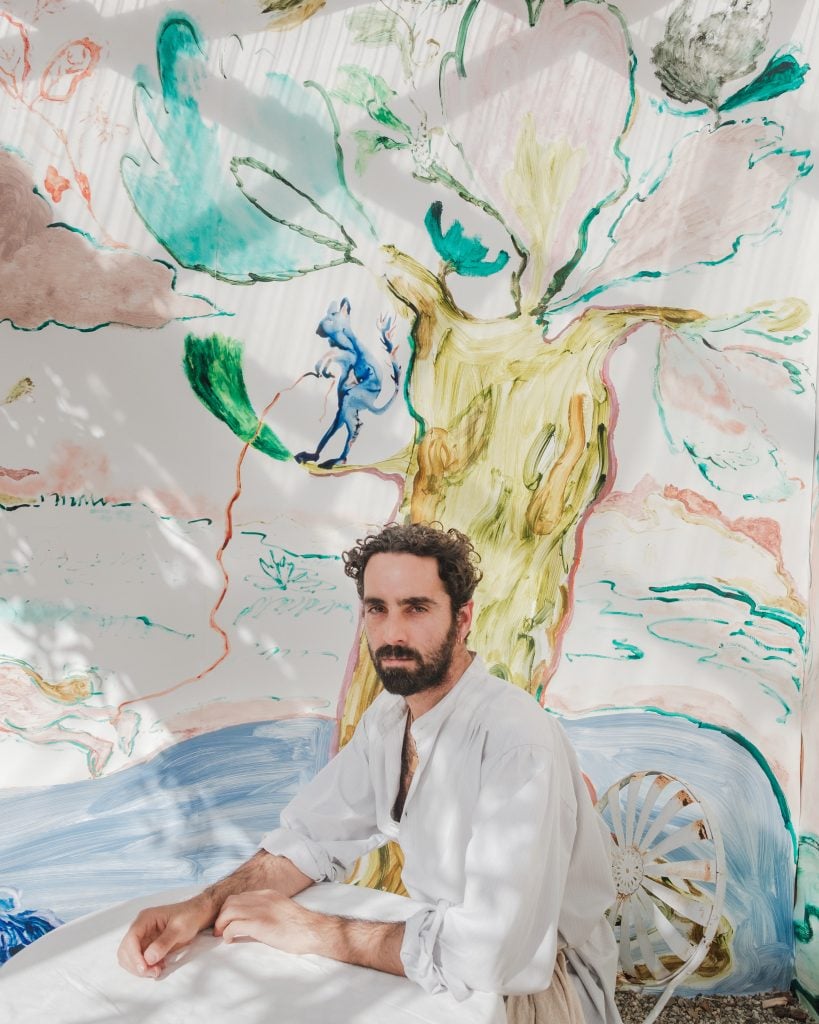
Jay Ezra Nayssan with mural by Patricia Iglesias Peco. Photo: Exhibit View.
Since its founding in 2014, Del Vaz has proposed a unique model for how to run a nonprofit arts space, shuttling in function between home and gallery, informal residency, garden and apothecary (featuring artist-sourced wares like a sake face mask by Candice Lin and mechanically painted tablecloths by Piero Golia), and academic art publishing house. In that time, Nayssan has developed a reputation for spotlighting important emerging talents such as Alicia Adamerovich and Max Hooper Schneider, showing their work in conversation with established, edgy artists such as Paul Thek. Profit is not the point, but Nayssan allows that museums including LACMA and London’s Victoria & Albert have acquired works following his shows.
Artist Olivia Erlanger, who showed works in “Shell” last year, said, “The atmosphere of any Del Vaz event is always based in the spirit of generosity. The entire ethos of the project, and truly just how Jay lives his life, is this idea of being open-hearted and thus having an open door….Everything for him—down to the apothecary where they are highlighting local artisans to the publishing project, and even the garden in the backyard, where at one point they had ducks, chickens, cats, and a rabbit all running around—this is just part of an all-encompassing curatorial experience, and the result is one that is very transportative.” It all adds up to Nayssan’s ability to create “some sort of alternate reality within Los Angeles.”
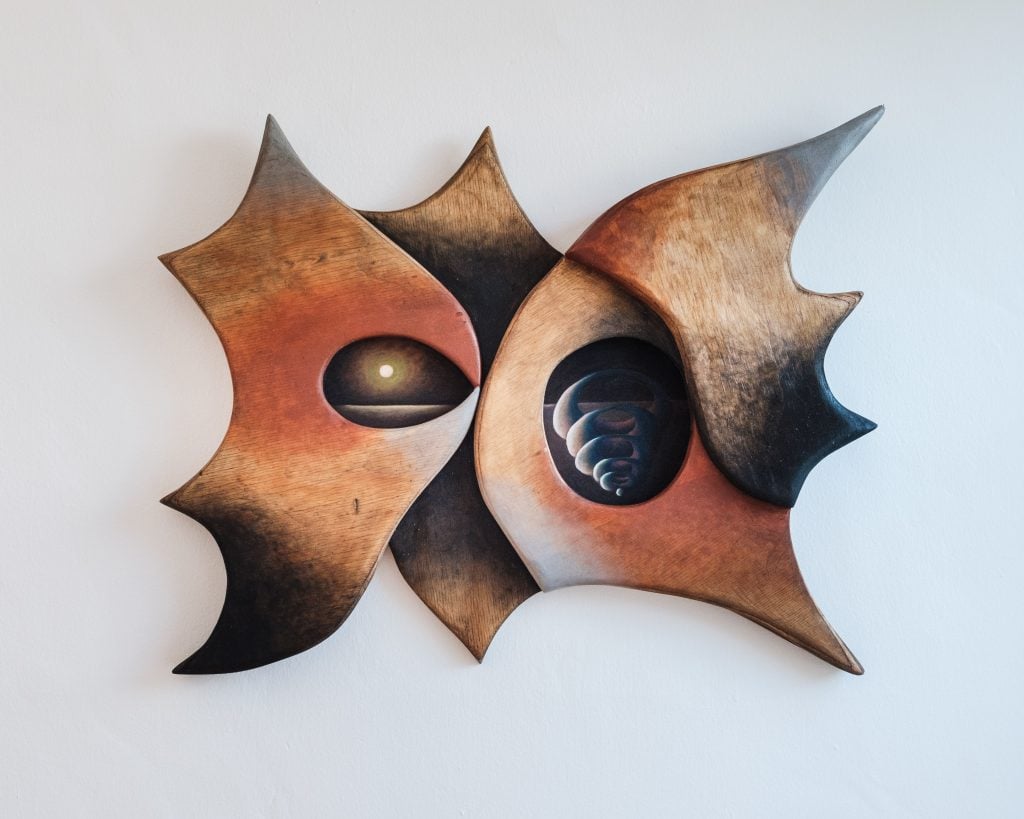
Alicia Adamerovich, Genesis (2021). Courtesy of the artist and Del Vaz Projects.
This year, Del Vaz is assuming yet another function as a curatorial collaborator with Frieze Projects. Curated by Nayssan, “Against the Edge” is a series of five artist projects, installations, performances, and talks that take place across the Westside, a place where—as Nayssan puts it—it is easy to “mix history, urban myth, anecdote, and personal memory to create a story of not only what’s gone, but what’s left.” Among the events will be an exhibition by the late French sculptor Nicola L. at the Thomas Mann House, a performance of a John Cage composition at the Santa Monica Pier Carousel, and an exhibition of three works by the artist Tony Cokes at Beyond Baroque Literary Arts Center.

Installation view of “Nightmare Bathroom: Sula Bermudez-Silverman, Nicki Green,
Candice Lin, Roksana Pirouzmand, & Bri Williams” at Del Vaz Projects, September 2022. Courtesy of Del Vaz Projects, Santa Monica. Photo: Exhibit View.
“Against the Edge” also features an exhibition of the late Los Angeles artist Julie Becker’s work at Del Vaz’s gallery space, located within Nayssan’s and his partner’s well-appointed home in Santa Monica. The edifice is a 1929 Spanish-style house that also happens to be the childhood home of Shirley Temple, a location close to the sea and touched by a fair share of Hollywood nostalgia. To enter the gallery, visitors pass through front doors connected to a short corridor that opens up onto a red brick courtyard. A fountain and a verdant array of plants set amid the sloping bricks make the site feel out of time. The room that houses the exhibitions, originally a primary bedroom, is located off of that courtyard, so visitors are able to pass into the space without entering more private quarters. (Access is normally by appointment, but during the week of February 13, it is open Monday to Saturday from 12 to 4 p.m.)
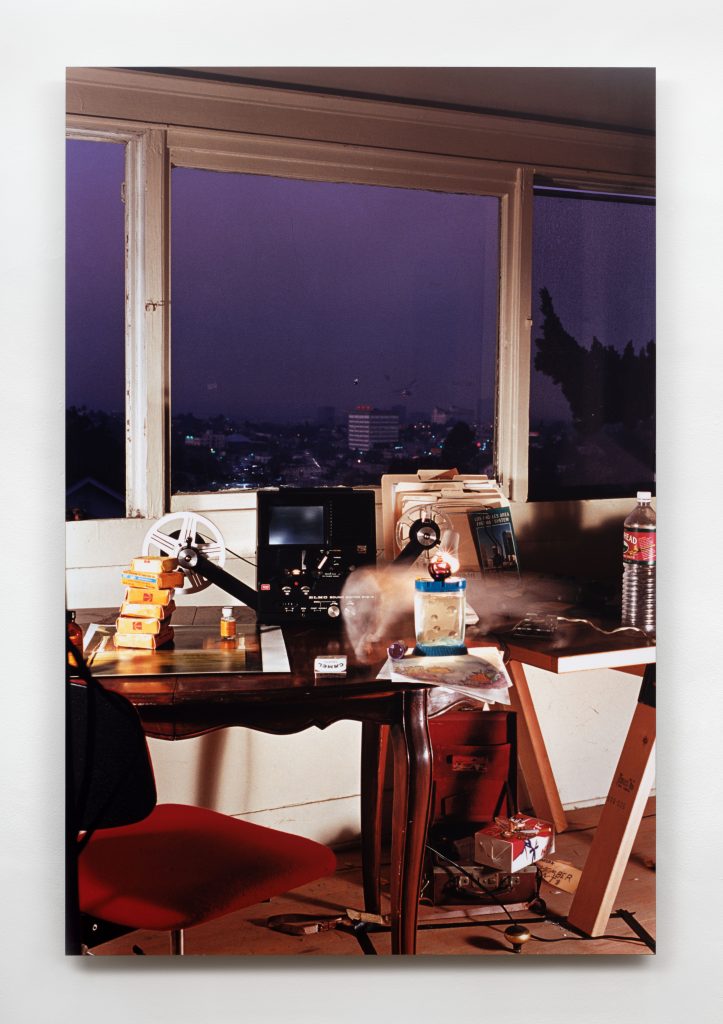
Julie Becker, Whole (Projector) (1999). Courtesy of Del Vaz Projects, Santa Monica. Photo: Paul Salveson.
The Los Angeles artist Julie Becker, who died by suicide in 2016, is known for her delicate installations that dealt with an uncanny and unsettled sense of domestic space. The exhibition at Del Vaz includes selections from a wide-reaching project she made while living in a rundown Echo Park bungalow in the 1990s. In keeping with the questions put forth by “Against the Edge,” the work in “(W)Hole” circles Los Angeles apocrypha, this time a 1990s story of gentrification, drug use, and AIDS. The story Becker told about the work was that her supposed landlord, the California Federal Bank, made her a deal that she could live in her bungalow in exchange for cleaning out the belongings left by a victim of AIDS. The story wasn’t quite true; Becker’s building wasn’t owned by the bank. Regardless, the CalFed Building that dominated Becker’s view out her window loomed large in her works, “Federal Building with Music (2002)”—an ominous symbol in a shifting city. A tiki bar left in the bungalow by the former resident is the subject of “Whole (Bar) (1999).” The former resident wasn’t actually a victim of AIDS, as Becker claimed, but something in the bar echoed the decline and terror of the post-AIDS scene in LA. “W(hole)” fabricates and channels a moment, presented in fragments, a story refusing resolution.
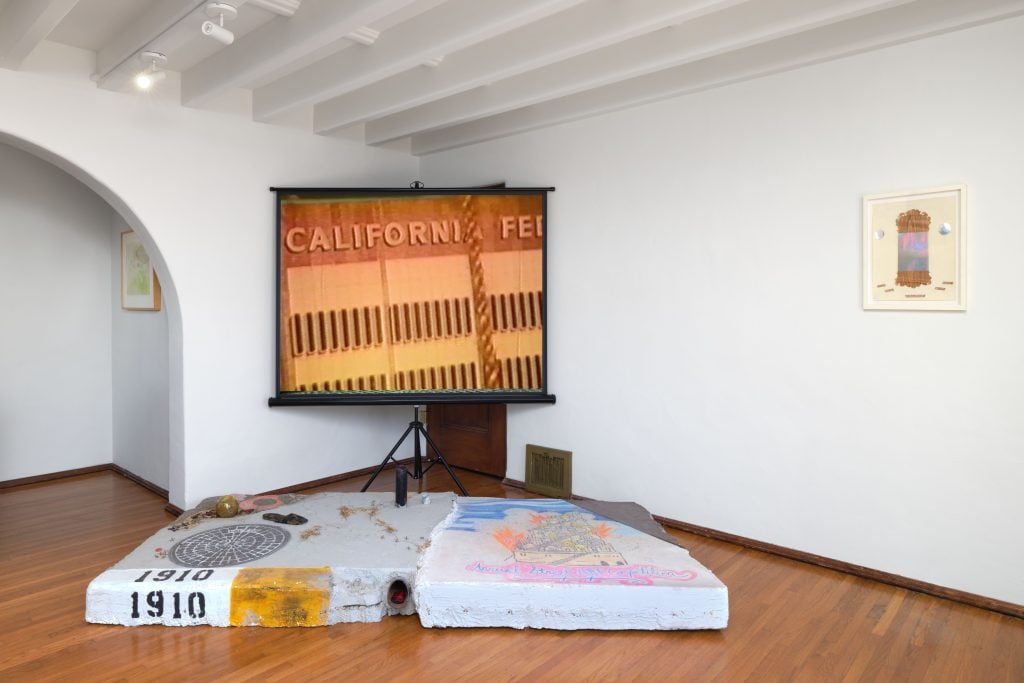
Installation view, “Julie Becker: (W)hole” at Del Vaz Projects. Courtesy of Del Vaz Projects, Santa Monica. Photo: Paul Salveson.
It is this refusal of resolution that most interests Nayssan. He sees Del Vaz—curatorial platform, gallery, home, artist garden, residency, and whatever else it might become—as first and foremost an “open-ended question,” the answers to which are assembled and disassembled in equal turns with every exhibition.
Del Vaz Projects is located at 259 19th Street, Santa Monica, CA 90402.